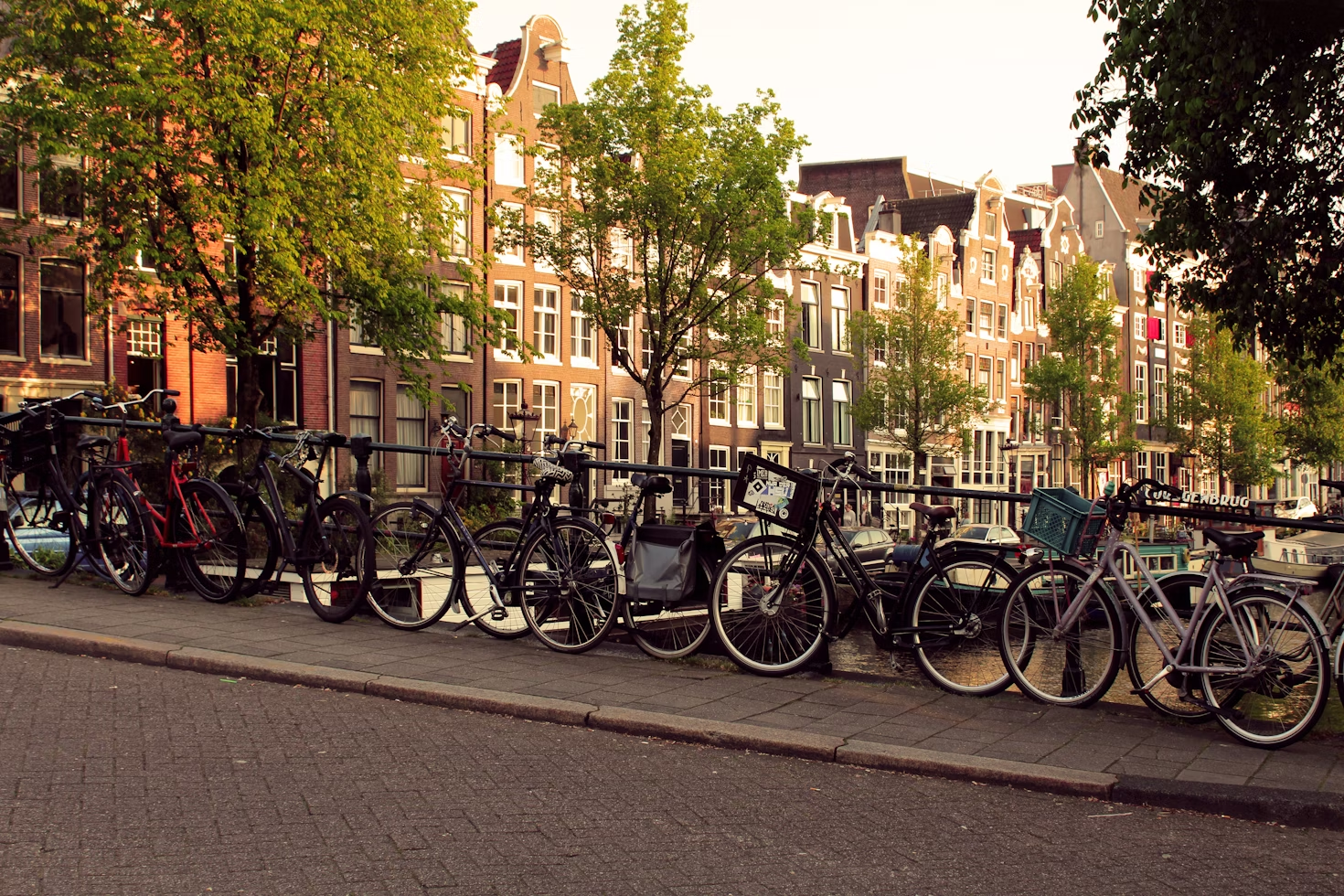Netherlands, a mobility model for all?

September 22 will be Car-free Day, and it can be an opportunity to test different modes of transport. In France, in 2021, the car fleet consisted of more than 38 million cars, nearly 6 million light commercial vehicles, 600,000 heavy vehicles and 94,000 buses. These figures reflect the importance of cars and motor vehicles in our daily lives. And if today some cannot do without their car, we told you in a previous #questiongreen that 15% of French people live less than two kilometers from their workplace but that among them, more than 50% go there by car.
There are, however, numerous alternatives to travelling alone by car. Whether it's cycling, carpooling, teleworking or public transport, for a large part of urban trips, and a part of rural trips, the solutions to avoid the car are accessible to all and make it possible to drastically reduce greenhouse gas emissions from motor vehicles.
Biking on a global scale
If the bicycle were used globally for daily trips as it is in the Netherlands, how much greenhouse gas could be avoided?
If, like the Dutch, everyone made their daily trips by bike rather than with an internal combustion engine, we could avoid the emission of 700MtCO2e, which is the carbon footprint of the United Kingdom or even almost 2% of global emissions.
An Oxford study showed that if everyone made one trip per day by bike, this would reduce transport emissions by around two thirds per person. For a French person with an average carbon footprint of 9.9 tCO2e per year and whose transport share represents around 2 tons of CO2e, this can therefore make it possible to save more than 1.3 tCO2e per person each year, or 13% of the personal carbon footprint.
The bicycle is also taking an ever more important place in our daily lives, as shown by the evolution of bicycle production between 1962 and 2015. In the year of COP21, more than 123 million bikes were produced, including nearly 80 million in China. However, a study has shown that countries with high or middle incomes have more bicycle owners, but these countries also have higher car use. The use of the bicycle is therefore not automatic, even when it is within reach, since in these countries, only 5% of trips were made by bike.
The development of the use of bicycles will in particular require better accessibility and the improvement of infrastructures (bicycle paths and secure parking, in particular). Following the example of the Netherlands and Denmark, making cities more bicycle-friendly will encourage the use of bicycles.
But cities and countries are not limited to promoting the use of bicycles to reduce the footprint of daily and exceptional trips. For example, in the summer of 2022, the city of Berlin sold a €9 pass giving access to all trains, buses, trams or subway in the country. Such an offer was intended to encourage German consumers to use public transport rather than private cars. A logical consequence of this objective of the €9 transport pass is to reduce fuel consumption, and therefore to save energy in a tense international context.
Germany is not the only nation experimenting with free public transport. Since 2020, Luxembourg has introduced free public transport for all. According to the Luxembourg government, this measure prevented the emission of 290,000 tCO2e.
If transport is such an important issue today, it is because it represents both one of the most emitting sectors of activity, and one of the largest consumers of fuel and more generally of energy, and because it represents a lever for action in the short term.
In 2019, the transport sector was responsible for 24% of global emissions, behind electricity production (41%) and ahead of industry and construction (19%). In France, it is even more striking, because energy production is low carbon. In France, transport is responsible for 43% of GHG emissions, well ahead of the residential sector and industry and construction, which are responsible for 14% and 13% of GHG emissions.
This sector is among the most emitters, in particular because of its energy consumption. In 2021, the transport sector was responsible for 28% of final energy consumption, 95% of which came from oil.
To conclude, it is essential that everyone is committed and takes measures to reduce their impact because, as the IPCC presented in its reports, it is imperative to reverse the global emissions curve by 2025. With this in mind, the Formula 1 Grand Prix of Holland promoted responsible mobility for the large number of spectators (300,000 people) who came to Zandvoort near Amsterdam. Indeed, 35% of visitors came by bike, 35% by train, 15% by bus and 15% by different means of transport. The car park was located 7km from the circuit, with self-service bikes and a designated lane to go to the event. Thus, although it is a particularly high-emitting activity, the organizers of the Netherlands Grand Prix have put in place significant resources to reduce the carbon impact associated with the organization of the event.







